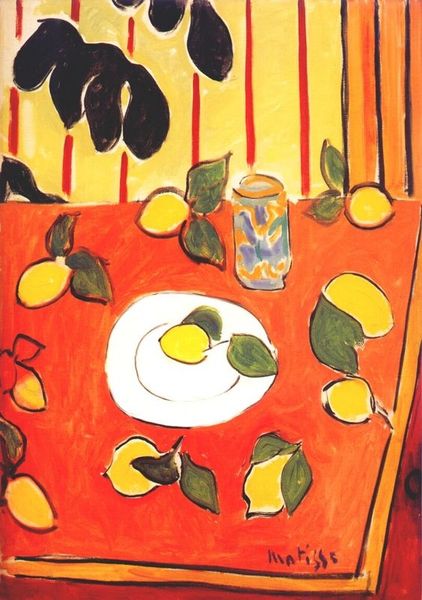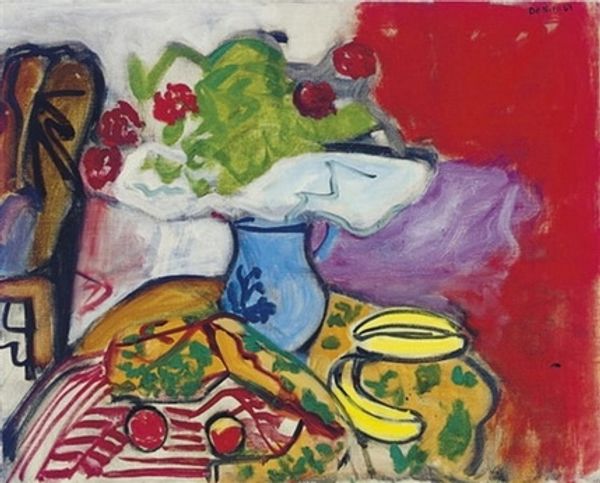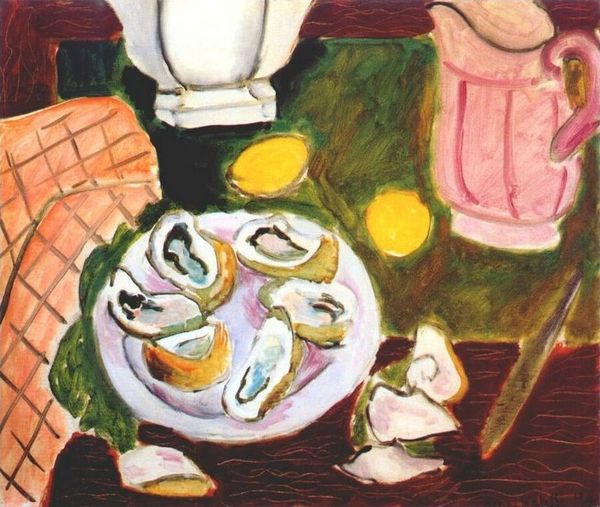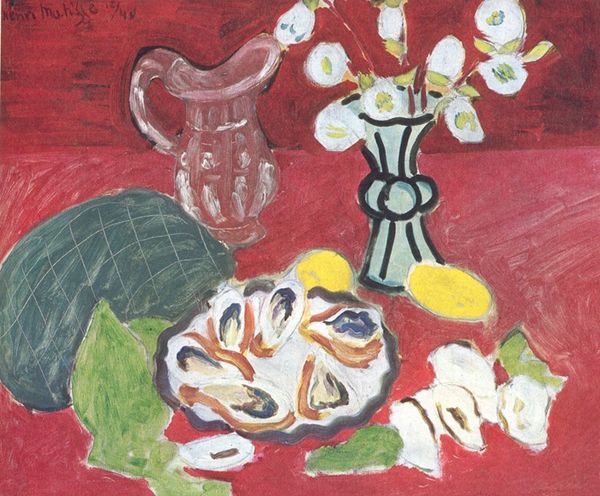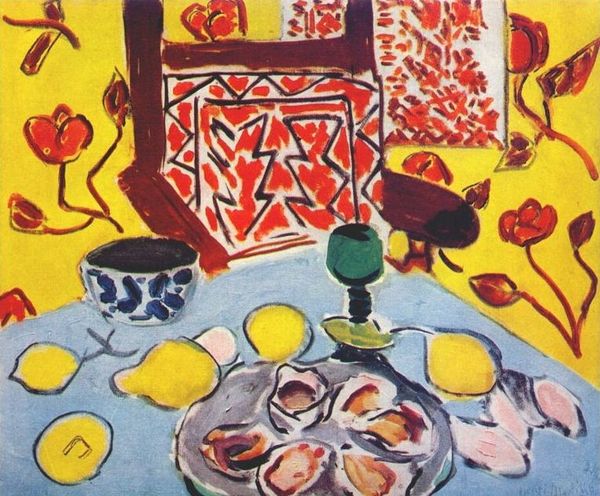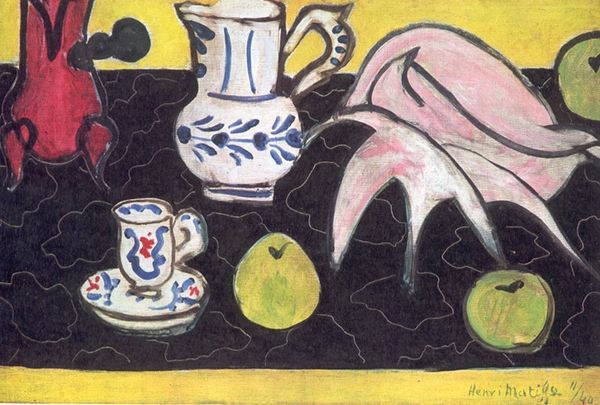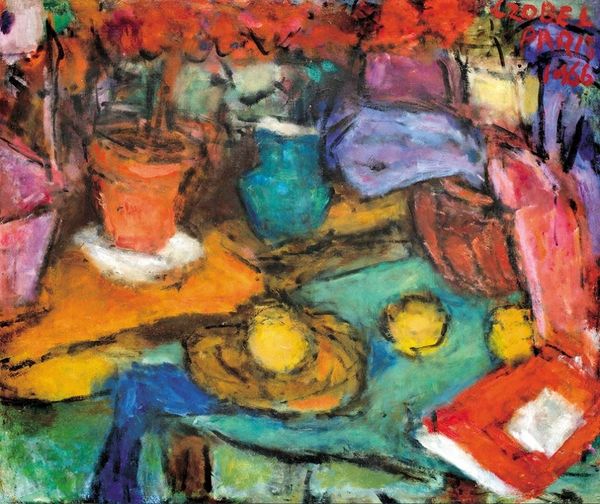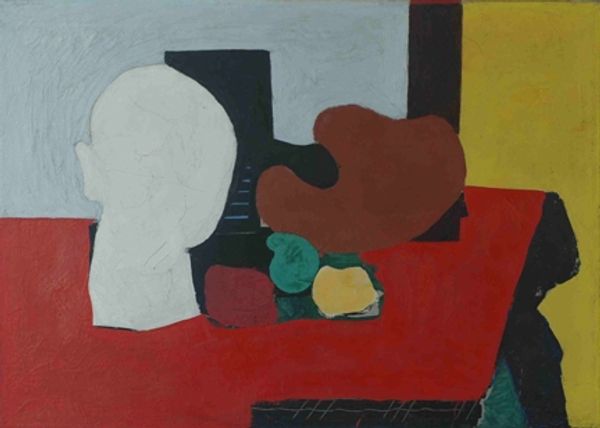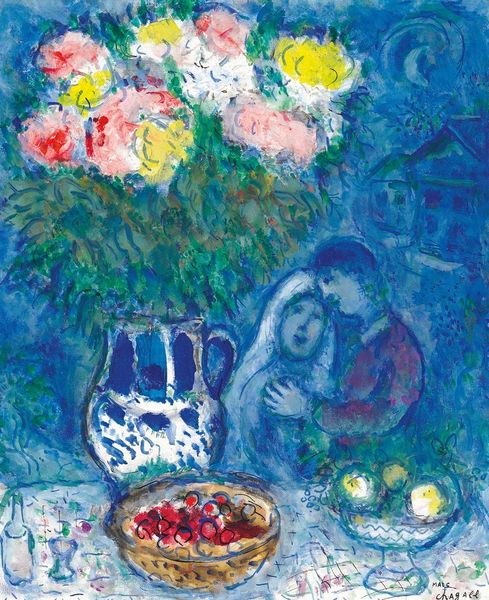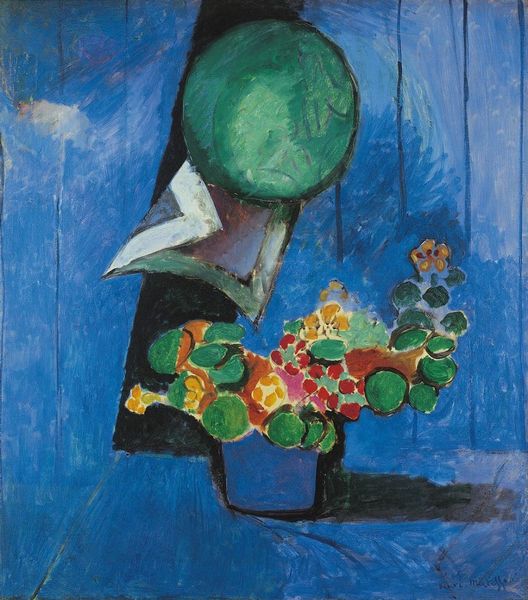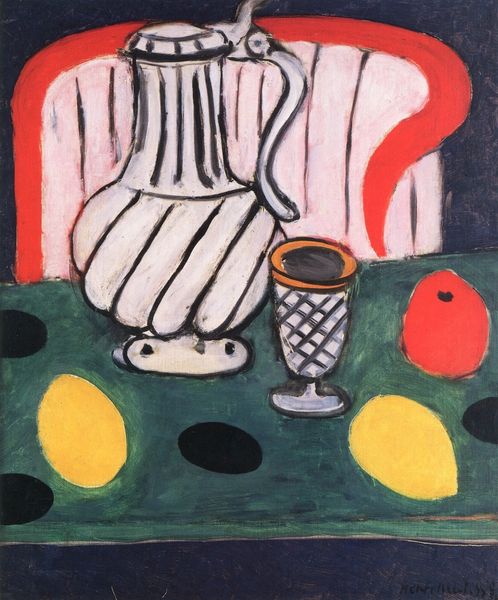
Dimensions: 61 x 73 cm
Copyright: Henri Matisse,Fair Use
Editor: Here we have Henri Matisse's "Tulips and oysters on a black background" from 1943, currently residing in the Musée Picasso in Paris. It's such a lively scene. I'm curious, what catches your eye most about this painting? Curator: It’s intriguing how Matisse juxtaposes luxury with wartime simplicity. Oil paint, typically for grand portraits, renders humble objects: oysters and tulips, likely sourced locally due to wartime constraints. Consider the labor involved; someone harvested those oysters, someone cultivated those flowers. How does this choice of subject matter, during wartime, reflect societal tensions concerning class and consumption? Editor: That's interesting. I hadn't thought about the societal tensions it reflects. Curator: Look closely at the black background – it almost feels like a crude grid. How does that starkness, coupled with the rich color of the still life, change the mood? Editor: It makes everything in the front seem even more vibrant and alive. Like a stark contrast. It really highlights the labor and materials in the objects shown. Almost feels deliberate. Curator: Precisely. And consider the flatness, the way Matisse denies deep perspective. It's less about illusion and more about presenting these materials directly, challenging conventional hierarchies within painting itself. High art reduced to the everyday objects, rendered with evident materiality of the paint itself. Does seeing it this way alter your interpretation? Editor: Definitely, it’s no longer just a beautiful still life, but a reflection on society and art production. Curator: Exactly. And reflecting on that helps us recognize a bit of Matisse’s process, his choices of materiality in terms of form and the means of artmaking itself.
Comments
No comments
Be the first to comment and join the conversation on the ultimate creative platform.
